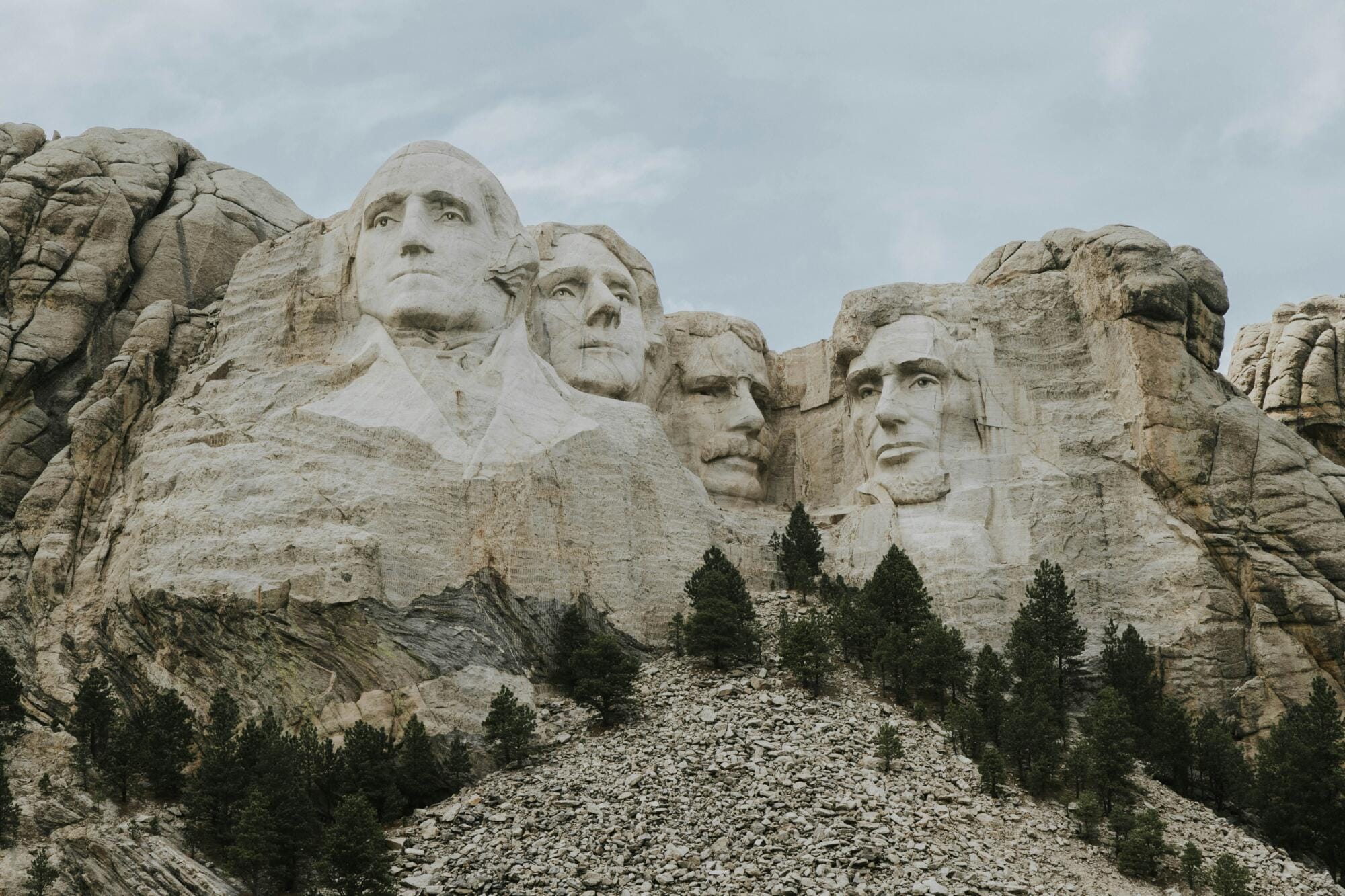Why Washington and Lincoln deserve to be on our currency

Being wealthy isn’t a prerequisite to being the president of the United States, but as they say: fortune favors the bold.
Presidents George Washington and Abraham Lincoln are arguably two of the greatest leaders in our country’s history. But aside from their leadership accolades and large influence on our country’s trajectory, both also developed a substantial net worth both before they became president and while in the White House. This Presidents’ Day, let’s look back on the finances of Washington and Lincoln. But in true M1 fashion, we’re also highlighting how these two made their fortunes.
President George Washington
Term: April 30, 1789 – March 4, 1797
The man on the one-dollar bill was a man of wealth built on a very handsome salary, but also a jaw-dropping portfolio of assets.
In 1789, the presidential salary was $25,000 per year – roughly $870,000 in today’s dollars. For context, President Joe Biden’s salary is $400,000, not including his pension payouts. But here’s the real jaw dropper: President Washington’s salary was 2% of the total federal budget in 1789.
If we applied that to today’s fiscal budget, Biden would be making $122 billion per year.
But aside from Washington’s potential income, he did plenty else to amass his wealth. He was a land speculator and began purchasing real estate at a young age, and he also inherited some after his half-brother passed away. He also had income from his Mount Vernon plantation, however, the whiskey distillery on-site made much more than any other enterprise on the land.
However, because his portfolio was focused on real estate, it’s well documented that he was asset rich and cash poor at times. But it’s worth noting that the wealth and asset values were propped up by the hundreds of slaves owned by the Washington family, including the land and slaves that his wife Martha brought into the marriage. So with unpaid labor, it’s not shocking that the Washington family net worth was significant.
Because of the ballooning size of wealth, some historians have considered him one of the richest Americans ever. Here’s why:
“…When he died in 1799 his estate was pegged at about $780,000. But it is an estimate. In a schedule of property that accompanied his twenty-eight-page handwritten will, Washington lists the properties and holdings he wishes sold and what he thinks they are worth. There is real estate from Virginia to the Ohio Valley to New York to the District of Columbia, $35,000 worth of shares and bonds, as well as Mount Vernon livestock. The total is $530,000—an enormous sum for the time. But this figure is only part of the first president’s financial snapshot. There is no valuation of his more than 7,000-acre Mount Vernon estate, which was divided among relatives…”
His net worth is roughly $17.5 million in today’s dollars. It’s plenty to live on, but there’s even more speculation around that final number.
The “relative ‘prestige value’” of the wealth compared to the average American at the time is estimated at $429 million in 2012 dollars, according to research from Colonial Williamsburg. That would be roughly $574 million in 2024.
President Abraham Lincoln
Term: March 4, 1861 – April 15, 1865
I’d like to believe that if Abraham Lincoln were alive today, he would admire every penny and $5 bill he earned. His face has been on both the coin and paper currencies since 1909. It’s a small thank you to the 16th President of the United States that wasn’t just a great leader, but also an investor in our country.
Growing up, Lincoln did not come into wealth right away. He was born into poverty and had very little formal schooling as his time was dedicated to help his family.
As he grew older, he started and expanded his law practice as his main source of income. But during the 1850’s, he had started growing his net worth and started lending his own personal money out to earn interest. When he came into office, he had $9,000 invested in interest-bearing notes – or $315,000 in today’s dollars. But the real wealth building came from his income as the President.
Like Washington, he earned a $25,000 per year salary – equivalent to $876,000 today according to inflation data and CPI numbers from the Minneapolis Federal Reserve. But he actively took the money he earned and purchased Treasury warrants, an early form of government bonds.
In March and April 1862, he purchased a total of $16,200 in Seven-Thirty treasury notes. The name came from the interest they yielded: 7.30%. In the years following, he gathered a collection of government bonds, securities, and cash:
- $16,200 in Seven-Thirty notes
- $26,181.40 in Temporary Loan certificates
- $8,000 in Five-Twenty bonds
- $4,044.67 in uncashed Treasury salary warrants
- $89.00 in greenbacks (cash)
- $883.30 in gold coins
This article [PDF] summarizes Lincoln’s investing strategy and goals better than I could:
“During his time as President, Lincoln had created a nest egg worth $59,781.04. He had reinvested all his investment income. All told, Lincoln invested half of his Presidential income in U.S. government securities. He could have made more profit investing in the stock market or speculating in the price of gold, but maximizing profit was not his goal. Instead, he wanted to put his money to work to insure the future of his family and his nation.”
It’s been 159 years since President Lincoln was assassinated. Across those assets mentioned above, at a 6% rate of return, that nest egg would be worth a staggering $631 million — without adjusting for inflation. This is the power of compound interest.
And if you want a real deep dive into the personal finances of Honest Abe, check this out.
The bottom line
Both Lincoln and Washington were paid wildly well for their time in office. In fact, their salary is much better than it is today when accounting for inflation.
But their salaries alone didn’t make them wealthy, it was the ability to use that income to invest in profit-bearing investments that gained value over time. And while calculations of Washington’s wealth are impossible without accounting for the value of the enslaved people he owned, it’s clear that both he and Lincoln benefited from a strategic approach to their finances. Whether it was building a law practice or buying boring U.S. treasuries, these leaders made it a point to put their money to work in businesses (in many cases built on the back of slavery), but also in their nation they worked to build.
And now, after molding the future of our nation, both of their faces are in our wallets on the $1 and $5 bills.
20240216-3397805-10788401
- Categories
- Plan



